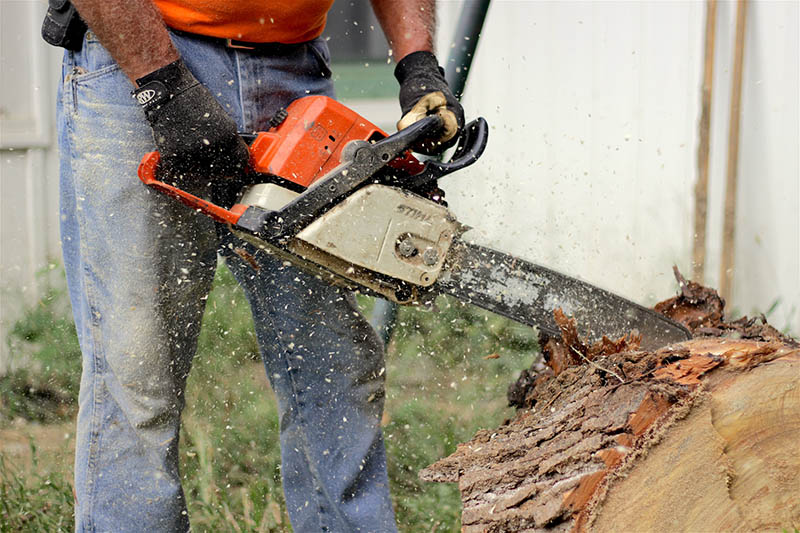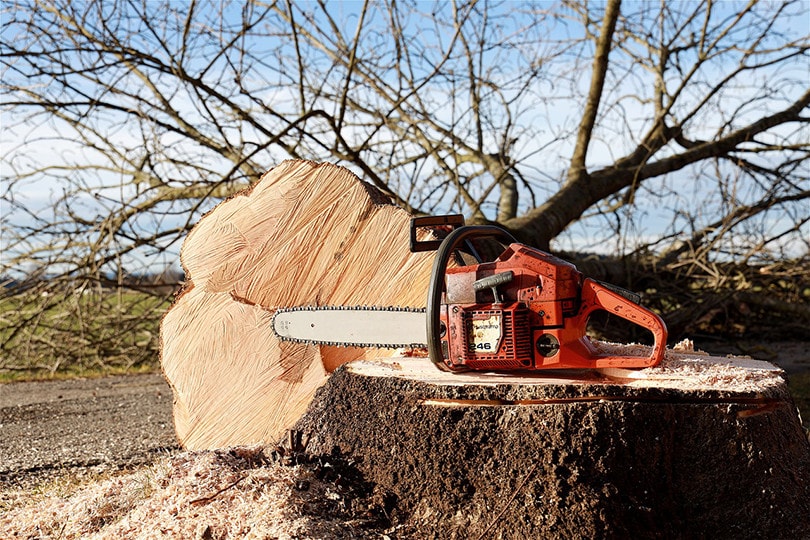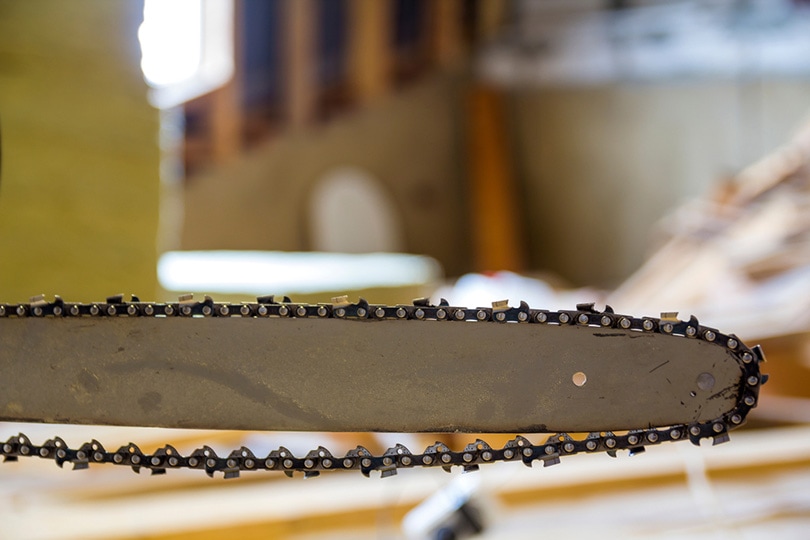Who Invented the Chainsaw? History, Origins, & Evolution
-
Pete Ortiz
- Last updated:

When we look at the world around us and everything in it, sometimes it’s easy to forget that so many items are newer inventions. The modern chainsaw is one of these things, with the first modern chainsaw hitting the market in 1926.
But the first-ever chainsaw hit the market almost 150 years before that and for a completely different purpose. It’s an enlightening (and disturbing) story, but it goes to show how far we’ve come through the years! The original chainsaw was invested by Dr. John Aitken and Dr. James Jeffray in the 1780s.
Who Invented the Chainsaw?
While Andreas Stihl of the Stihl company invented the modern chainsaw in 1926, he doesn’t get the credit for developing the first-ever chainsaw. That accolade goes to Dr. John Aitken and Dr. James Jeffray in the 1780s.
While Dr. Aitken and Dr. Jeffray’s chainsaw was a much smaller hand-powered chainsaw, it had all the same elements that you can find in a modern chainsaw.
It had a chain and small teeth on the blade, and it rotated in the exact same way that a modern chainsaw does. But while people use modern chainsaws almost exclusively for cutting timber, these first chainsaws never made it near wood. Instead, doctors used them during childbirth!

Why Was the Chainsaw Invented?
The short answer here is that Dr. Aitken and Dr. Jeffray invented the first chainsaw to help with cesarean sections during childbirth.
We’ll dive into the details next, but know that it’s not for the squeamish. Jump to the next section if you need to, but if you want to learn more, keep reading.
For much of human history, cesarean sections involved a procedure called a symphysiotomy. This procedure used a small knife to cut away parts of the pelvic bone and cartilage to create enough space to remove the baby.
The entire process happened without anesthesia, and it was a slow process. Not only was it extremely painful for the mother, but it also led to large amounts of blood loss, high risks of infection, and other severe concerns.
The chainsaw that Dr. Aitken and Dr. Jeffray developed was intended to speed up the process of cutting away bone and cartilage. The faster they could get through everything, the quicker they could get the baby out.

The Evolution of the Chainsaw
The first chainsaws that Dr. Aitken and Dr. Jeffray invented don’t have much resemblance to modern chainsaws, although they did work the same way.
To help you understand how we went from those rudimentary devices to the timber-sawing devices of today, here’s a breakdown of the major chainsaw developments throughout history.
The Early Chainsaw
Dr. Aitken and Dr. Jeffray invented the early chainsaw in the 1780s. It was a fairly small device, about the size of a kitchen knife. The blade itself had small teeth, like what you would find on a modern chainsaw, and the teeth moved via a wooden crank that was attached to the front with a chain.
While it sounds like a device from a horror story, it was extremely helpful at the time and remained in use for most of the 19th century.
The Modern Chainsaw
When most people think of a chainsaw, their mind likely goes to something that looks like the first Stihl chainsaw. It was a two-person chainsaw, where each person would hold onto one end with the chainsaw operating in the middle. Much like modern chainsaws, people used this early chainsaw for timber. This first Stihl chainsaw was an electric chainsaw and weighed 116 pounds.
Just one year later, manufacturers Dolmar and Stihl developed and produced the first petrol chainsaws. These were also two-person chainsaws, but since they used petrol, they were far more portable. But the petrol engine did add more weight, with the Stihl petrol chainsaw weighing 139 pounds.
Further Chainsaw Developments
Over the years, many chainsaw developments have taken these initial massive modern chainsaws and made them far more compact and easier to use. In 1945, aluminum alloys were developed, which enabled chainsaw manufacturers to significantly cut down on weight and produce one-man chainsaws.
By 1949, McCulloch Motors Corp produced the world’s lightest chainsaw, weighing just 25 pounds, which is 114 pounds lighter than the first petrol chainsaw!
Another big development for modern chainsaws came in 1964 when Stihl developed and incorporated anti-vibration into its chainsaws. While you might think that a modern chainsaw vibrates quite a bit, it’s nothing like the initial models!
In 1973, Husqvarna Group created the first automatic chain break, which stopped the chain from kicking back if it broke. Before this device, a chainsaw was an extremely dangerous tool to use. If the chain broke, it would fly back and hit your face.
Finally, in the 1980s, Husqvarna released the first chainsaw that included plastic parts in its design. While plastic isn’t quite as durable as aluminum alloy, it does allow for cheaper and lighter chainsaws.
Final Thoughts
Sometimes we look back on history and think about how lucky we are not to live during those times. Looking back at the development of the chainsaw is one of those times.
Today, we use chainsaws for cutting down trees, and branches, and shaping lumber, and we’re perfectly fine with keeping it that way!
Featured Image Credit: Tim Umphreys, Unsplash
Contents



